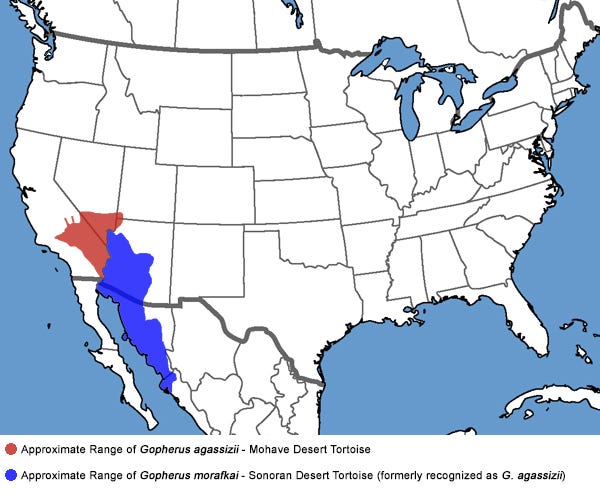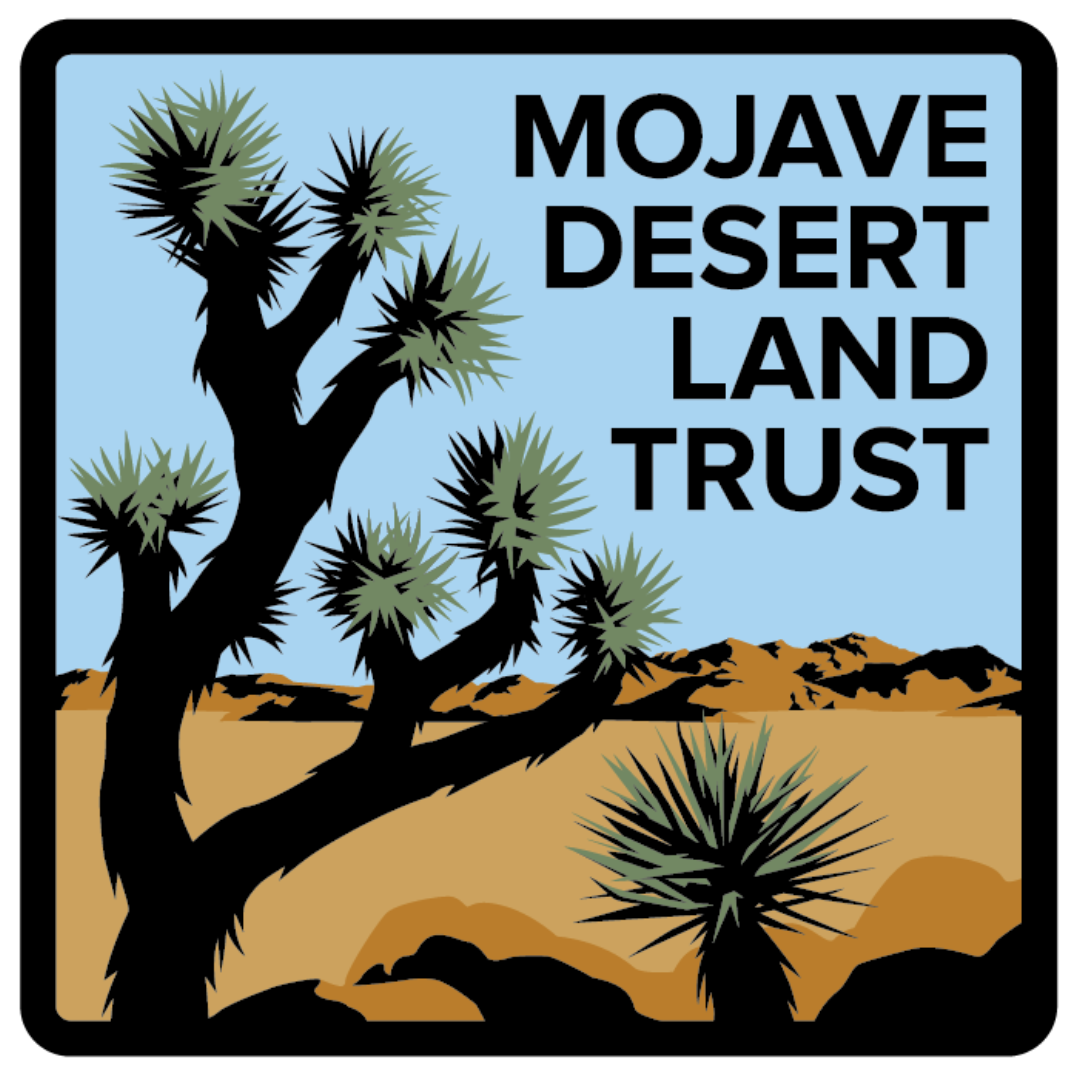Preserving a symbol of the desert
The search for signs of life of desert tortoise on the Mojave Desert Land Trust’s properties.
By Luke Basulto, Land Steward
Imagine life four inches from the ground.

You would see things from a very different perspective. From just four inches up you would only see what is right in front of you. Rocks, shrubs, and the occasional small critter would be the majority of your interactions. Fortunately for us humans, we do not have to spend our lives with our heads in the dirt, so to speak. That view is reserved for a very special reptile, Agassiz’s desert tortoise (formerly known as the Mojave desert tortoise) Gopherus agassizii.

It’s possible that this name change may be something you are hearing for the first time. That’s okay! The desert tortoise was reclassified only nine years ago into two distinct species, divided by the Colorado River. Unfortunately, this also means that the original range of the Agassiz’s tortoise is now considerably smaller than what we once thought it was.

There is no doubt, at least to us here at the Mojave Desert Land Trust (MDLT) that the desert tortoise is truly an icon within the Mojave. It’s right up there with the Joshua tree, beautiful night skies, and wide, open views. But the tortoise population has decreased by 90% in some areas, with only about 2% of hatchlings surviving to adulthood. The Agassiz’s tortoise is now listed as Threatened by the U.S. Fish & Wildlife Service.
For the past six years MDLT has conducted two annual desert tortoise surveys on some of our lands that harbor these dinosaur-like creatures. The surveys we conduct are meant to determine the tortoise’s presence or absence from the area over consecutive years. This helps MDLT, as well as the California Department of Fish & Wildlife, understand the conditions and health of their populations and habitat.

One of our survey areas is located in the Chuckwalla Bench, an area designated as National Conservation Land, around 90 miles southeast of Joshua Tree National Park. I know what you are thinking, “Chuckwalla Bench” sounds like a place for big lizards to rest their feet. It’s only partly so. “The Bench” consists of some of the best critical habitat for desert tortoise in Southern California. Wide expanses of desert, perennial desert washes, and plenty of grasses to eat when they are in season. It is also home to some really cool endemic species like Munz’s Cholla, the biggest cactus in California. The area is as beautiful as it is ecologically important.

The other MDLT survey location is a valley hidden deep within the Cady Mountains called, well, Hidden Valley. The Cady Mountains are located 14 miles east of Newberry Springs, California. It’s a relatively sparse and often windy area consisting mainly of creosote bush and sandy soils in the lower bajada (the slope near the foot of a mountain made up of materials that have washed downward). It’s tough to imagine a tortoise living there. However, near the upper parts of the bajada the terrain is much rockier and this is where we found most of the tortoises. They were just a little camera-shy.

Our next survey is in March 2020 and will once again be in the Chuckwalla Bench. Not only will we be surveying our usual areas this year, but MDLT will also begin to survey two more of our lands in the Morongo Basin, namely Coyote Valley and Section 33. Over 600 acres will be surveyed.

All of MDLT’s tortoise surveys involve the surveyors lining up shoulder-to-shoulder, well about ten feet apart, and criss-crossing the property in transects. While doing this the surveyors are looking for any and all signs of tortoise life. What are those signs exactly? Scat (poop), an indicator of when a tortoise may have been in that exact spot. The diameter of the scat is measured in order to figure out the size of the tortoise that left it. They are also destroyed afterwards to prevent a recount the following year. Next are burrows. These not only show that tortoises are in that area but can give the surveyors an idea of the activity depending on the age and condition of the burrow. We will also come across carcasses or dead tortoises.

This sign is sad to discover but it can also tell us a lot. A carcass can tell the surveyor if the tortoise died for natural reasons, man-made causes like a vehicle collision or raven predation. It can also tell us if that tortoise had a disease like cutaneous dyskeratosis (shell rot) before it died.
Live tortoises are obviously the best indicator! Tracks, which are impermanent, are a good sign that a tortoise was there earlier that day.

Our hope here at MDLT is that the information gathered from these surveys will benefit the conservation and recovery of this species in some way.
The desert tortoise population is still in decline, mostly because of the effects that humans have on their habitat. The biggest threats include habitat loss through urbanization, large-scale renewable energy projects, proliferation of roads and highways, off-highway vehicle activity, wildfire, and habitat invasion by non-native invasive plants.
We may not be four inches from the ground, but as people who care deeply about the health of this desert and the life that inhabits it, we can still do our best to try and see things from a different perspective and realize the value and beauty of the things right in front of us.
These surveys are made possible through the support of volunteers experienced in desert field work as well as in conducting surveys. Thank you to all the volunteers who assisted with the tortoise surveys in 2019. And thank you to our supporters who help with our mission to protect this beautiful place in the world.
The desert tortoise
Weight: 8–15 lbs
Height: 4–6 in
Length: 9–15 in
Life span: 50–80 years (or longer!)
Diet: Herbs, grasses, cacti, wildflowers (especially apricot mallow)
Mating season: August-October. Clutch sizes are 1–14 eggs.
Home: The desert tortoise spends 95% of its life underground and brumates for up to 9 months a year.
(Source: US Fish & Wildlife)
